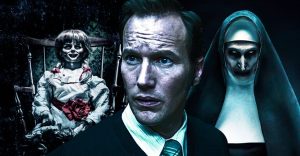Why Batman 1989’s Writer Hated The Controversial Joker Change

Tim Burton’s 1989 Batman is a pop culture icon, but it also made a controversial change to the Joker’s (Jack Nicholson) backstory that even the film’s writer detested. Before Burton’s film, Batman was largely known among the public as the camp TV show starring Adam West. However, Burton’s macabre sensibilities and monstrous Gothic vision for Gotham City proved comic book films could be taken seriously without losing their sense of fun.
Nicholson was perfectly cast as the Joker, balancing sadism with comical energy that differentiates the gangster clown from the actor’s previous villain roles. Batman chose to depict the Joker’s origin, giving him the name Jack Napier before the criminal falls into a vat of chemicals that bleach his skin and hair. Some argue the name detracts from the Joker’s mystique, but there’s a far bigger change that is more controversial.
Late in the film, Batman/Bruce Wayne (Michael Keaton) discovers the Joker is the same criminal who murdered his parents when he was a child. This change fuels the vigilante’s hatred for the clown and arguably simplifies the Dark Knight’s characterization from a permanently tormented hero to a man simply seeking revenge. Batman’s co-writer Sam Hamm hates this change, as revealed in David Anthony Kraft’s Comics Interview Batman Super Special, via Batman1989.com. The screenwriter believes the Joker’s backstory is “aterrible plot stretch” that was forced into the script, which made Hamm doubt Bruce would even continue being Batman after the end of the film.

Of the several changes made to the script during Batman‘s production, Hamm states the only one which he finds “grotesque and vulgar” is making Joker kill Bruce’s parents. He indicates it was a studio-mandated decision, one which was designed to draw a concrete parallel between Batman and Joker and bring their rivalry full circle. The subplot is performed well enough, especially during the film’s climax in Gotham cathedral, where Keaton effectively conveys Batman’s simmering rage with the line “I made you, you made me first“. Yet, it doesn’t dismiss the fact this reduces Batman to a revenge story, the hero avenging his parents in a way that’s impossible in the comics. Hamm is somewhat correct in comparing the story change to the 1974 revenge thriller Death Wish, criticizing executives for not considering how it didn’t make much sense within the context of Batman.
The Joker change weakens Batman’s entire motivation for fighting crime. Hamm believes it distorts the story’s “psychological premises” and gives the hero a rather straightforward way to deal with his childhood trauma. Typically, Batman is haunted by a random mugger killing his parents, not anyone of particular importance. However, Jack Nicholson’s Joker falling to his death at the end of Burton’s Batman effectively lends closure to Bruce’s suffering. As Hamm states, “My feeling is once he nails the guy who ruined his life, he can hang up the suit happily.” Batman couldn’t save his parents as a child but, by narrowing down the source of his conflict to one specific person in the present, defeating the Joker would allow him an excuse to end the vow he made to his parents. This detracts from the character’s tragedy, no longer a vigilante who must relentlessly stalk Gotham’s streets in fear of a similar trauma befalling others. With Gotham’s most dangerous maniac dead, he could be at peace.
This Joker change is also at odds with many of Tim Burton’s movies, as the director is devoted to misunderstood outcasts with an eternal struggle to adapt to society and make peace with themselves. However, without this backstory, there wouldn’t be the Joker’s iconic line, “Have you ever danced with the Devil in the pale moonlight?“, which ties directly into the flashback of the Waynes’ murder. Ultimately, Batman‘s flaws aren’t deep enough to detract from its status as a highly entertaining and influential blockbuster.
- The Batman (2022)Release date: Mar 04, 2022
- DC League of Super-Pets (2022)Release date: Jul 29, 2022
- Black Adam (2022)Release date: Oct 21, 2022
- The Flash (2023)Release date: Jun 23, 2023
- Aquaman and the Lost Kingdom (2023)Release date: Mar 17, 2023
- Shazam! Fury of the Gods (2022)Release date: Dec 16, 2022
About The Author

















